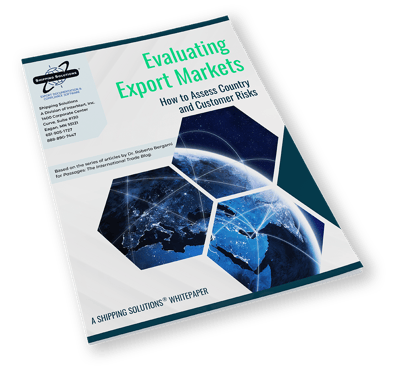Free Download:
Evaluating Export Markets: How to Assess Country and Customer Risks
If you aren’t properly evaluating potential export markets and customers, you could be putting your company at risk.
 Whenever you look at new export customers and markets, there’s always a chance something could go wrong. While you can’t completely eliminate that possibility, there are specific steps you can take to identify potential risks, analyze and evaluate them, and take the proper precautions.
Whenever you look at new export customers and markets, there’s always a chance something could go wrong. While you can’t completely eliminate that possibility, there are specific steps you can take to identify potential risks, analyze and evaluate them, and take the proper precautions.
In this whitepaper, you’ll learn what those steps are, so you can avoid dealing with unsavory characters—and potentially losing a lot of money.
You’ll learn how to:
- Identify bribery and corruption risks: Learn where to find free reports that rate countries and territories on their perceived level of public corruption and how to use this information.
- Measure country risk: Learn how to find reports that categorize countries according to the credit risk they pose and use this information during negotiations.
- Measure business regulations: Learn about the 10 categories the World Bank considers in its reports that assess the ease of doing business in various foreign countries.
- Review fairness of trade: Competition can drive you to be more successful, but unfair competition or predatory behavior is no good for business. Learn how to ensure you’re entering a fair market.
- Understand and manage bank risk: Exporters rely on foreign banks. Learn what questions to consider when assessing which to use.
- Use industry and government resources: From chambers of commerce to trade consulates, learn about the services available, many for free.
- Understand regulations and documentation requirements: The exporter is responsible for providing the necessary documents, with accurate information, to clear customs and ensure delivery and payment.
Get started now by downloading this free whitepaper.